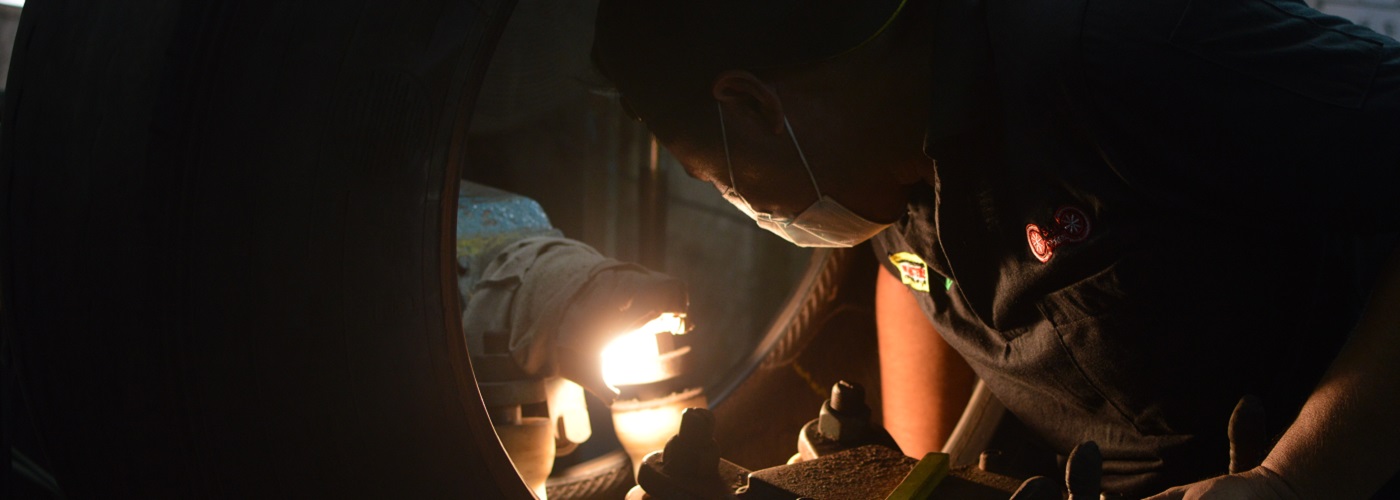Retreaded tires are lasting as long as a new tire, and in some cases longer. With the savings from retreading a tire, an operation can significantly reduce their cost-per-mile and still achieve the same number of miles driven per tire.
Retreading tires is one of the most effective ways to reduce and reuse tires. Not only will this save you money, it is the eco-friendly way to help the environment because we can use the tire casing multiple times after the original tread is worn off.
In the tire industry, oil is a major component in the rubber compounds used in tires. A retread uses about 1/3 of the oil needed for a new tire. Retreading is an important part to conserve our natural resources as well as utilizing the tire casings instead of dumping them into landfills.
Retreaded tires are a simple way a company can help to be GREEN. Tayar Celup Tanda Batu is one of the top tire retreaders in the nation. Contact us to learn more about the benefits and the overall retread process.
Conditions of tyres that cannot be repaired or retreaded:
 Run flat Run flat |
 Inner liner separation Inner liner separation |
 Casing separation Casing separation |
|
Deformed bead |
Ozone cracking |
Injury outside repair limit |
|
Exposed plies |
Impact damage |
Warranty for our retread tyres
We extend warranty support for the damages below
- Ply separation
- Splice opening
- Sidewall crack
- Tread separation
- Repair failures
- Wrong matrix
- Under-cure
- Not centre
Top tips for extending tyre life
- Proper inflation
- Maintaining proper air pressure is the single most important thing drivers can do for their tyres. In the space of just one month, a tyre can lose two pounds of air pressure.It is important to check the air pressure of your tyres regularly to make sure your tyres are neither under- nor overinflated.Underinflation is the worst enemy your tyre can have. It causes increased treadwear on the outside edges (or shoulders) of the tyre. It also generates excessive heat, which can reduce tyre life. Finally, it reduces your fuel economy by increasing rolling resistance — soft tyres make your vehicle work harder.Overinflation is also detrimental to the tyre. Too much air pressure causes the center of the tread to bear the majority of the car’s weight, which leads to faster deterioration and uneven wear. Any kind of uneven wear will shorten the lifespan of your tyres.
- Balancing and alignment
- Having your tyres balanced and your vehicle properly aligned is important not only to the longevity of the tyre but also to the safety of the driver and to the performance of the car.Unbalanced tyres cause road vibration, which can lead to driver fatigue, premature tyre wear (also known as cupping or dipping) and unnecessary wear to your vehicle’s suspension. Tyres should be balanced when they are mounted on wheels for the first time or when they are remounted after a repair. They should be rebalanced at the first sign of a vibration or shimmy and should be balanced at least once a year, regardless.A vehicle is said to be properly aligned when all suspension and steering components are sound and when tyre and wheel assemblies are running straight and true. Proper alignment is necessary for even treadwear and precise steering. Uneven front or rear tyre wear, or changes in your vehicle’s handling or steering, can indicate misalignment.
- Regular rotation
- The weight of a vehicle is not evenly distributed to all four tyres. Therefore, regular rotation is necessary to maintain even treadwear and get the most out of your tyres.There are several methods of rotation. For all-season tyres and most vehicles on the road, tyres from the rear axle are moved to the drive axle and crossed to opposite sides of the vehicle. The tyres from the drive axle are moved to the rear but remain on the same sides. This is known as the “modified X” pattern.Tyres with “directional” design are rotated differently. In this case, all tyres remain on the same side of the vehicle and are rotated straight forward and straight back. For four-wheel-drive vehicles, it is recommended to switch all four tyres, both from side-to-side and in axle position.






